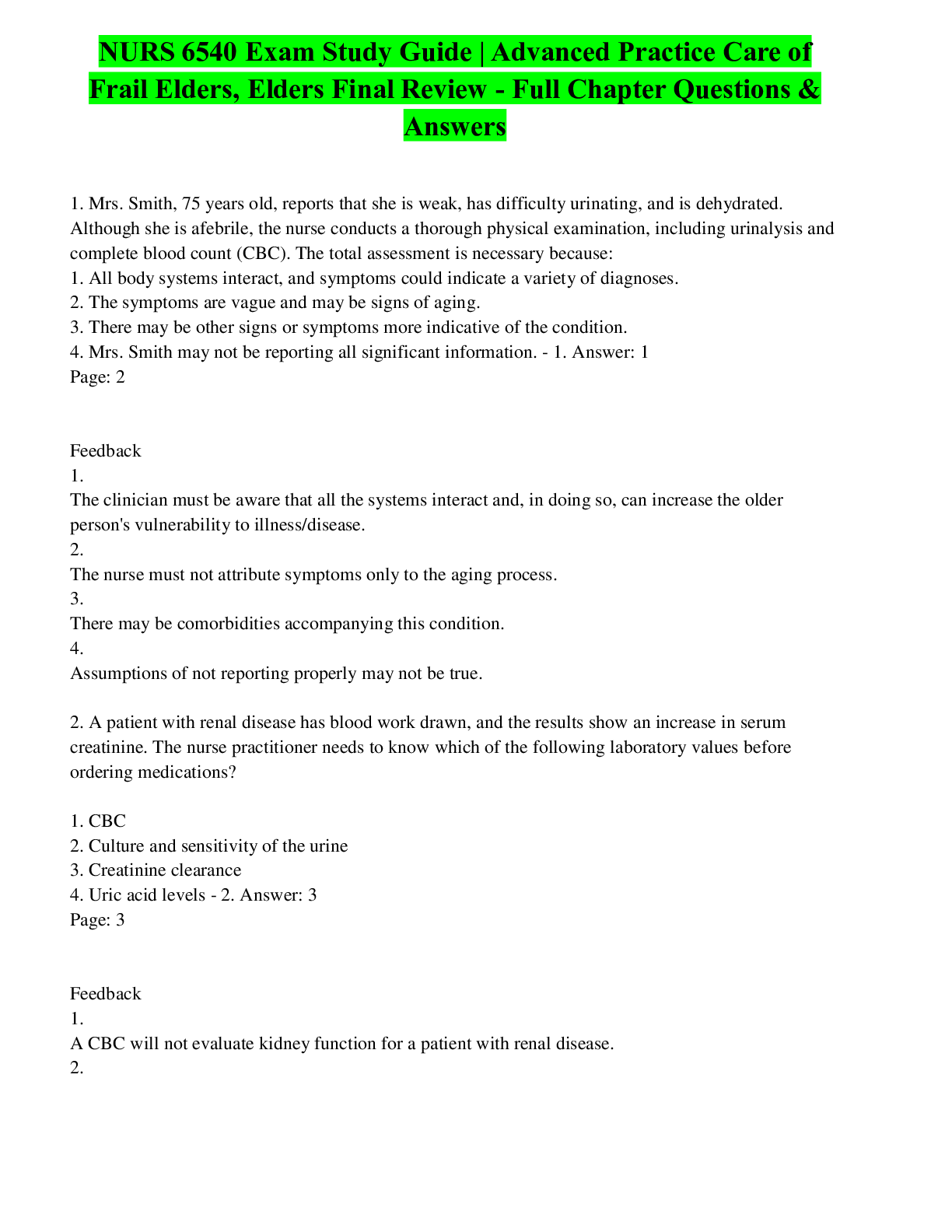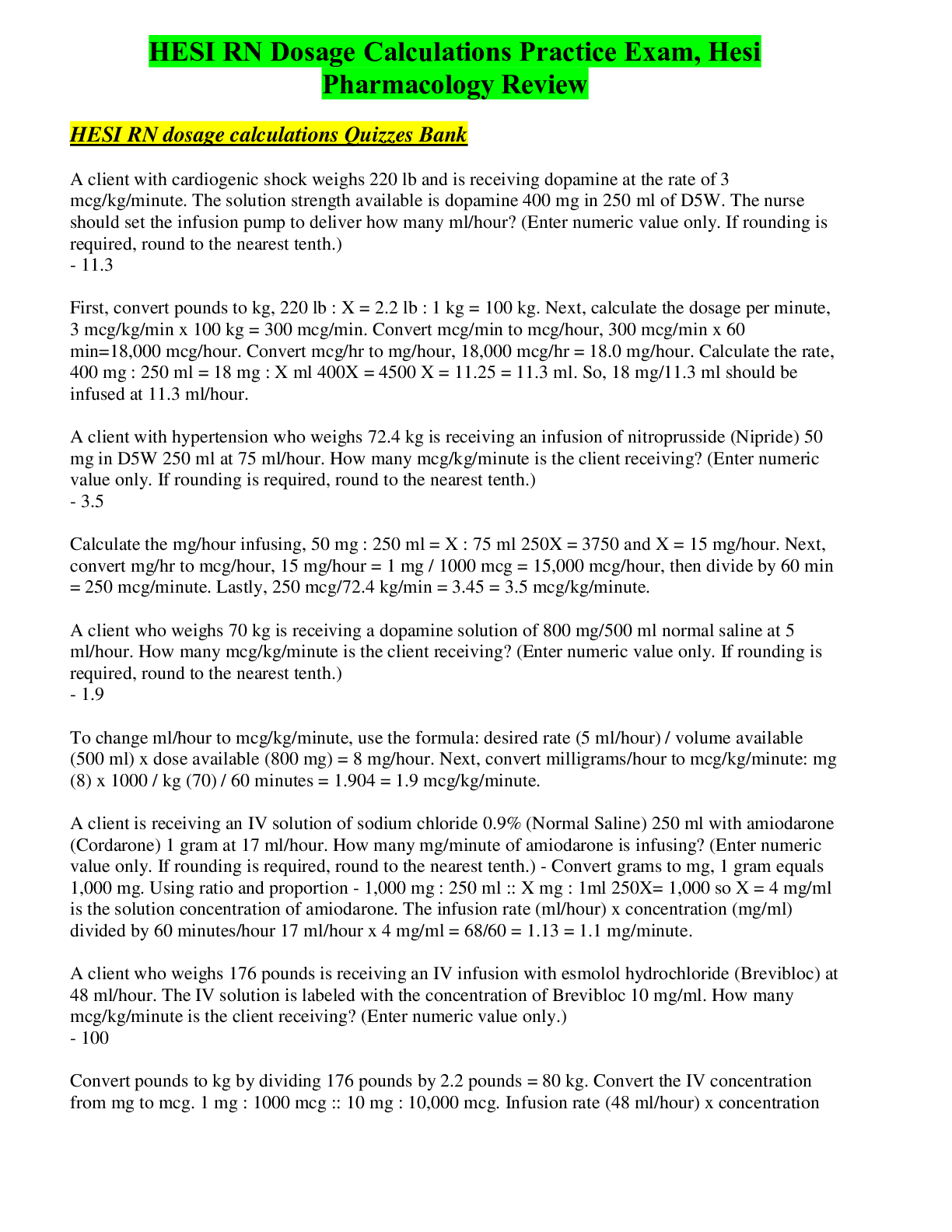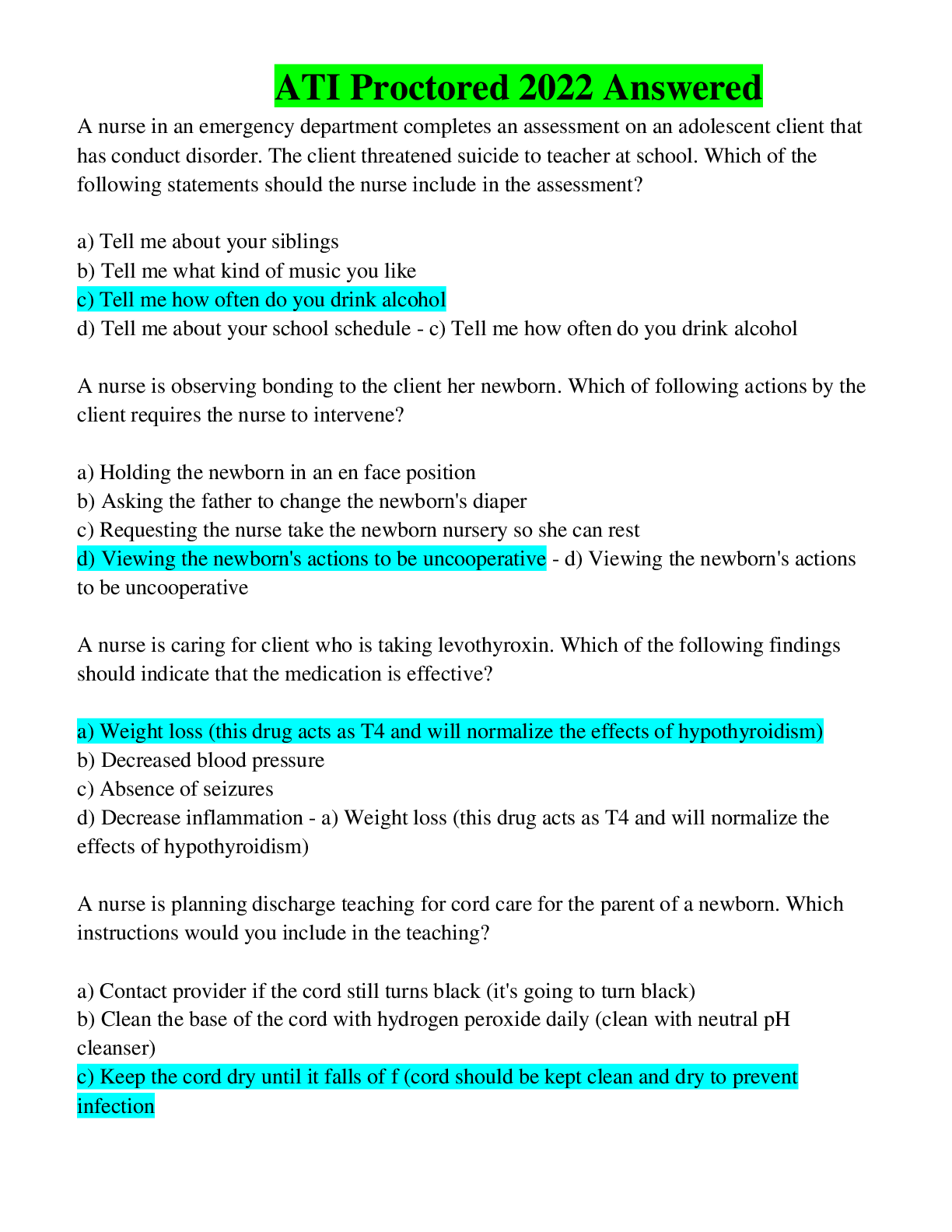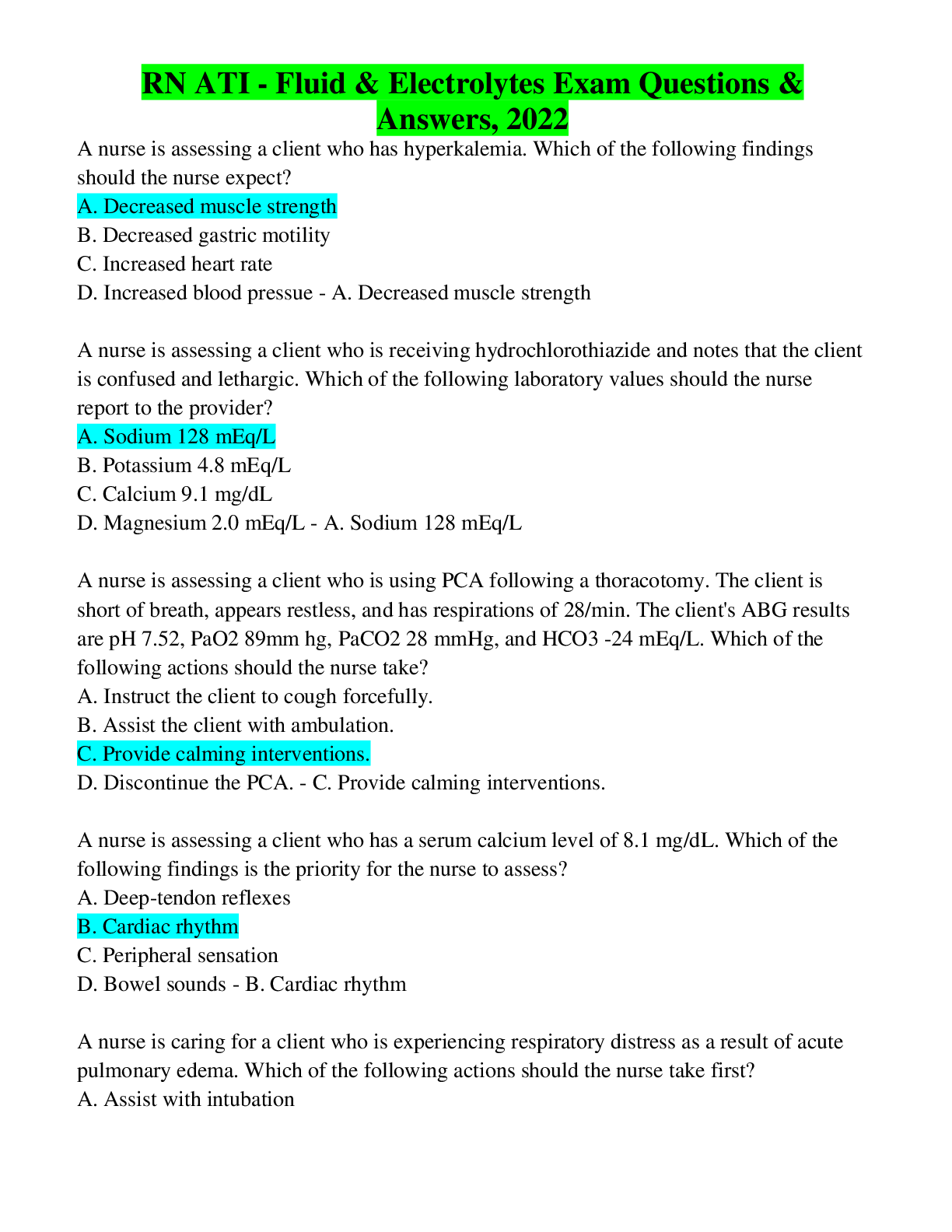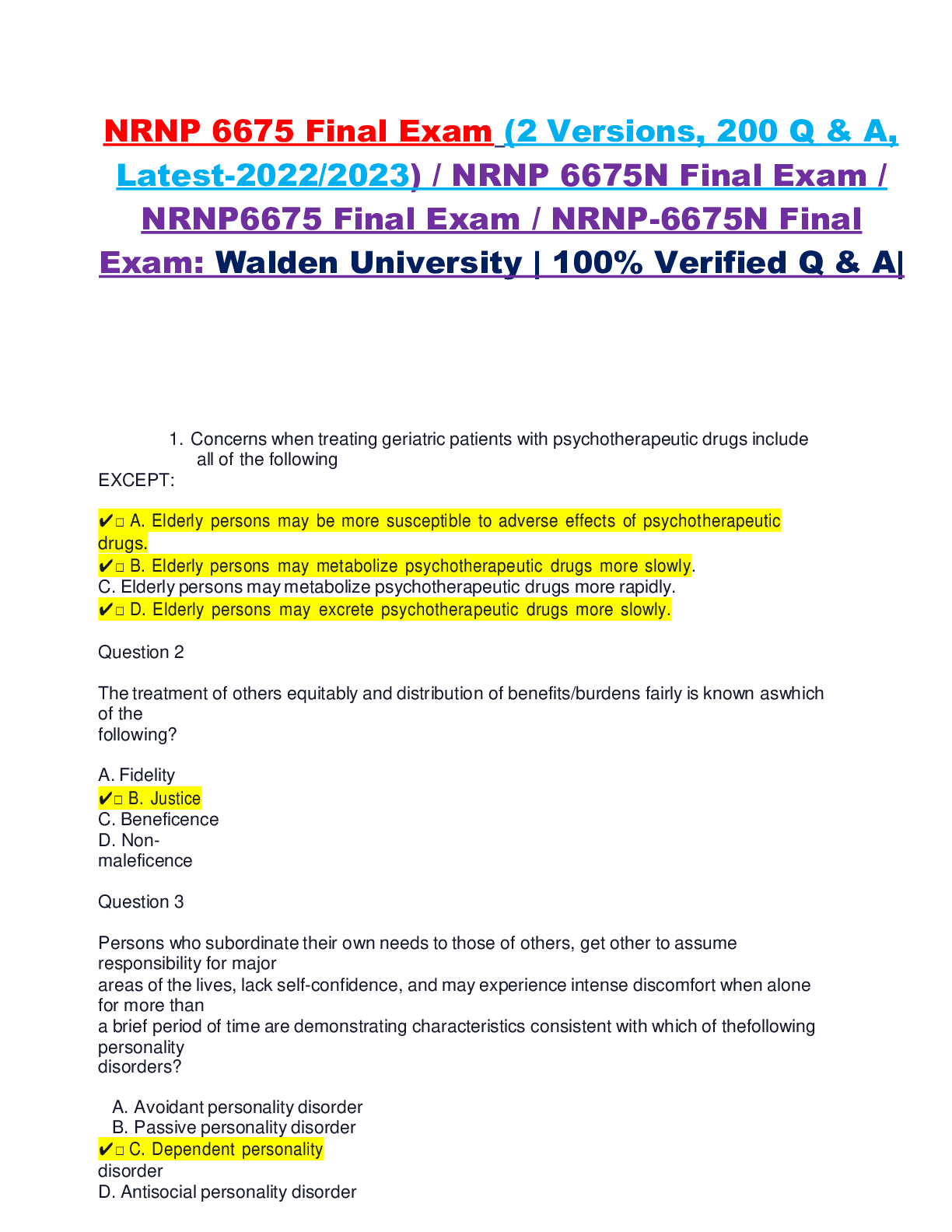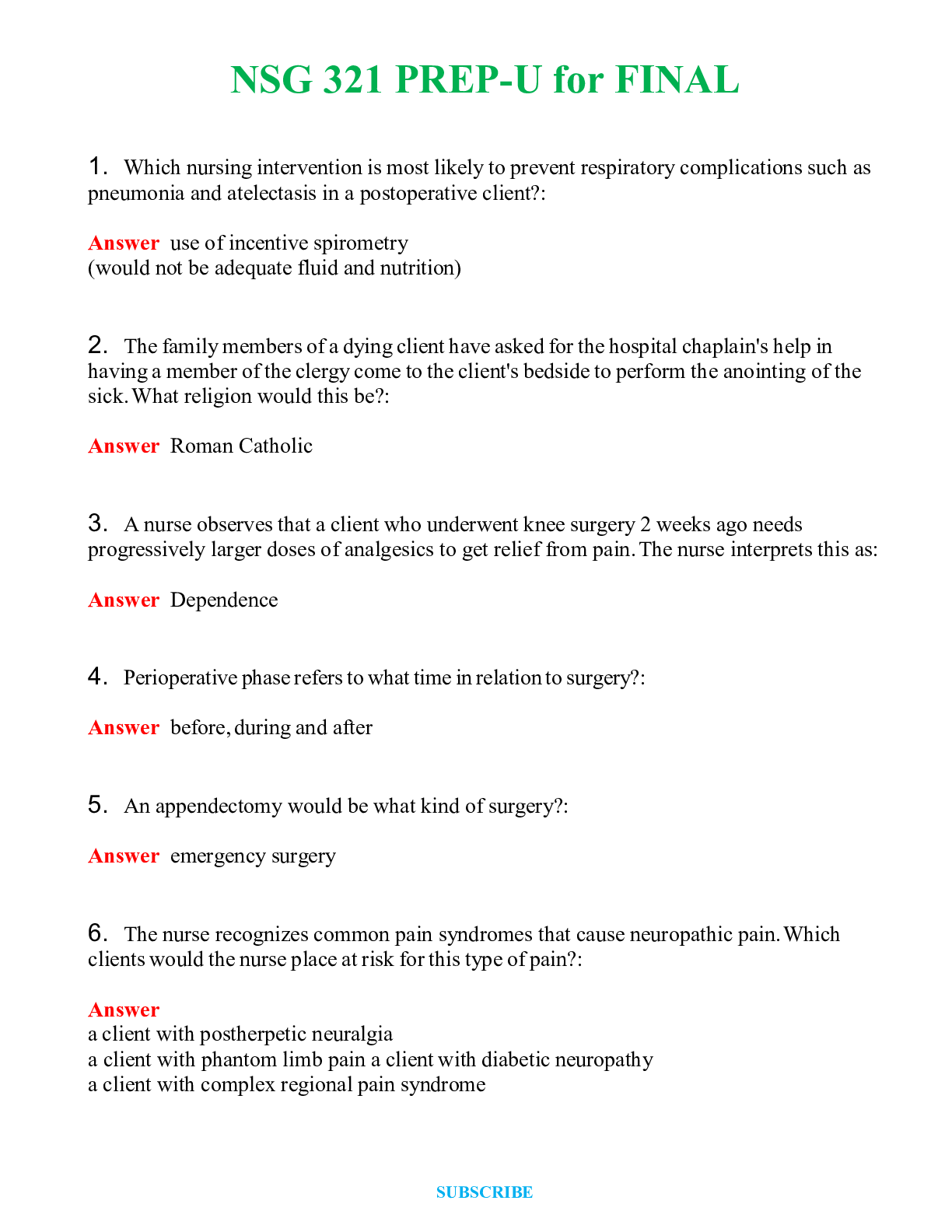*NURSING > EXAM > International Board Certified Lactation Consultant, (IBCLC) 2022 Exam Guide, A+ Solutions (All)
International Board Certified Lactation Consultant, (IBCLC) 2022 Exam Guide, A+ Solutions
Document Content and Description Below
International Board Certified Lactation Consultant, (IBCLC) 2022 Exam Guide, A+ Solutions-Embryo and neonate weeks 3-4 - A primitive milk streak running bilaterally from axilla to groin Embryo and neo... nate Weeks 4-5 - Milk streak becomes mammary milk ridge or milk line . Paired breasts develop from this line of glandular tissue Embryo and neonate weeks 7/8 - Thickening and inward growth into chest wall continue Embryo and neonate weeks 12-16 - Specialized cells differentiate into smooth muscle of nipple and areola - epithelial cells develop into mammary buds - epithelial branches form to eventually become alveoli Embryo and neonate weeks 15-25 - Epithelial strips are formed which represent future secretory alveoli - lactiferous ducts and their branches form and open into a shallow epithelial depression known as the mammary pit - the mammary pit becomes elevated forming the nipple and the areola - an inverted nipple results when the pit fails to elevate Embryo and neonate After 32 weeks - A lumen ( canal ) forms in each part of the branching system Embryo and neonate Near term - 15-25 mammary ducts form the fetal mammary gland Neonate – - galactorrhea ( witch's milk ) : secretion of colostral like fluid neonate mammary tissue resulting from influence of maternal hormones - recommended not to express neonatal colostrum because this might lead to mastitis in the newborn Puberty - 1. Breasts keep pace with general physical growth 2. Growth of the breast parenchyma produces ducts , lobes, alveoli, and surrounding fat pad 3. Onset of menses at 10-12 continues development of the breast - primary and secondary ducts grow and divide . - terminal end buds form , which later become alveoli (small sacs where milk is secreted ) in the mature breast - proliferation and active growth of duct tissue takes place during each period and continues to about 35 years of age Pregnancy breast Development - 1. Complete development of mammary function occurs only in pregnancy 2. Breast size increases , skin appears thinner , and veins become more prominent 3. Areola diameter increases - Montgomery glands enlarge , and nipple pigment darkens Anomalies in breast Development - 1. Illnesses, chemo, therapeutic radiation to the chest , chest surgery , or injuries to the chest might affect development 2. Programmed apoptosis ( cell death ) has been suggested as one reason for lower breast cancer rates in bf women Exterior breast - Located in the superficial fascia ( fibrous tissue beneath skin) between 2nd rib and 6th intercostal space Tail of spence - Mammary glandular tissue that projects into the axillary region - distinguished from the supernumerary tissue because it connects to the duct system - potential are of milk pooling and mastitis Skin surface of Breast contains - Nipple, areola, and Montgomery glands Size - Not related to functional capacity Gives breast it's Shape and size - Fat composition Size may indicate - Milk storage potential Nipple - Conical elevation located slightly below center of areola Average diameter of Nipple - 1.6cm Average length of Nipple - 0.7 cm Hoe many milk Duct openings In nipple - 5-10 Smooth muscle fibers Function as a - Closure mechanism to keep milk from continuously leaking from the nipple The nipple is Densely innervated With - Sensory nerve endings What makes the nipple erect when contracted - Longitudinal inner muscles and outer circular and radial muscles Venostasis - Slows blood flow and decreases surface area Areola - Dark pigmented area that surrounds the nipple - elastic like nipple Average diameter Of areola - 6.4 cm Areola is constructed Of - Smooth muscle and collagenous , elastic , connective tissue fibers in radial and circular arrangement How does the nipple Aid infant in latching - Becomes smaller , firmer, and more prominent What happens to Areola in pregnancy - Darkens and enlarges Where are montgomerys tubercules located - Around the areola The Montgomery tubercules contain - Ductal openings of the sebaceous and lactiferous glands and sweat glands What happens to Montgomery glands in pregnancy - They enlarge and resemble small , raised pimples The Montgomery glands secrete ? - A substance that lubricates and protects the nipple Some s [Show More]
Last updated: 1 year ago
Preview 1 out of 57 pages
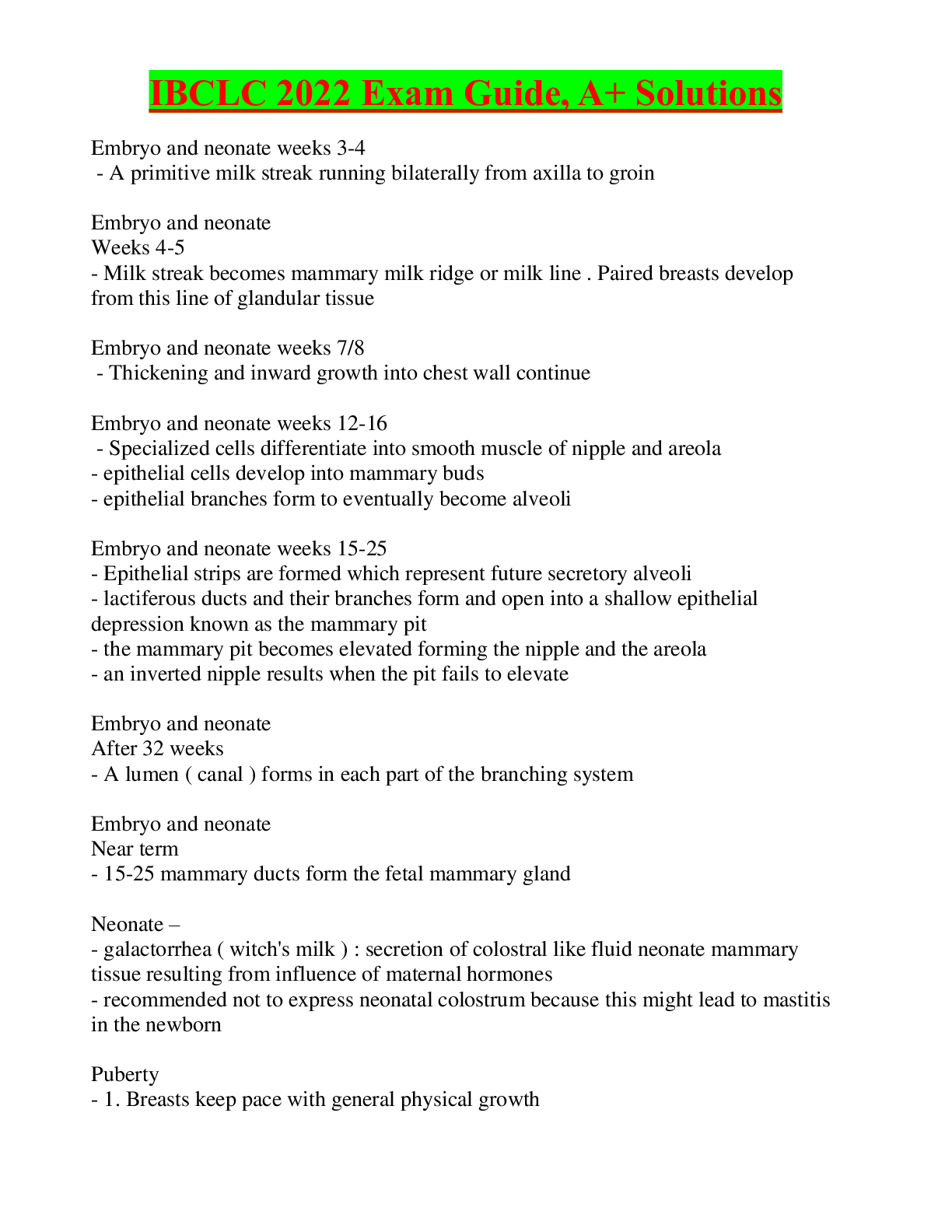
Reviews( 0 )
Document information
Connected school, study & course
About the document
Uploaded On
May 15, 2022
Number of pages
57
Written in
Additional information
This document has been written for:
Uploaded
May 15, 2022
Downloads
0
Views
38

 Pediatrics Practice Exam-Answered.png)
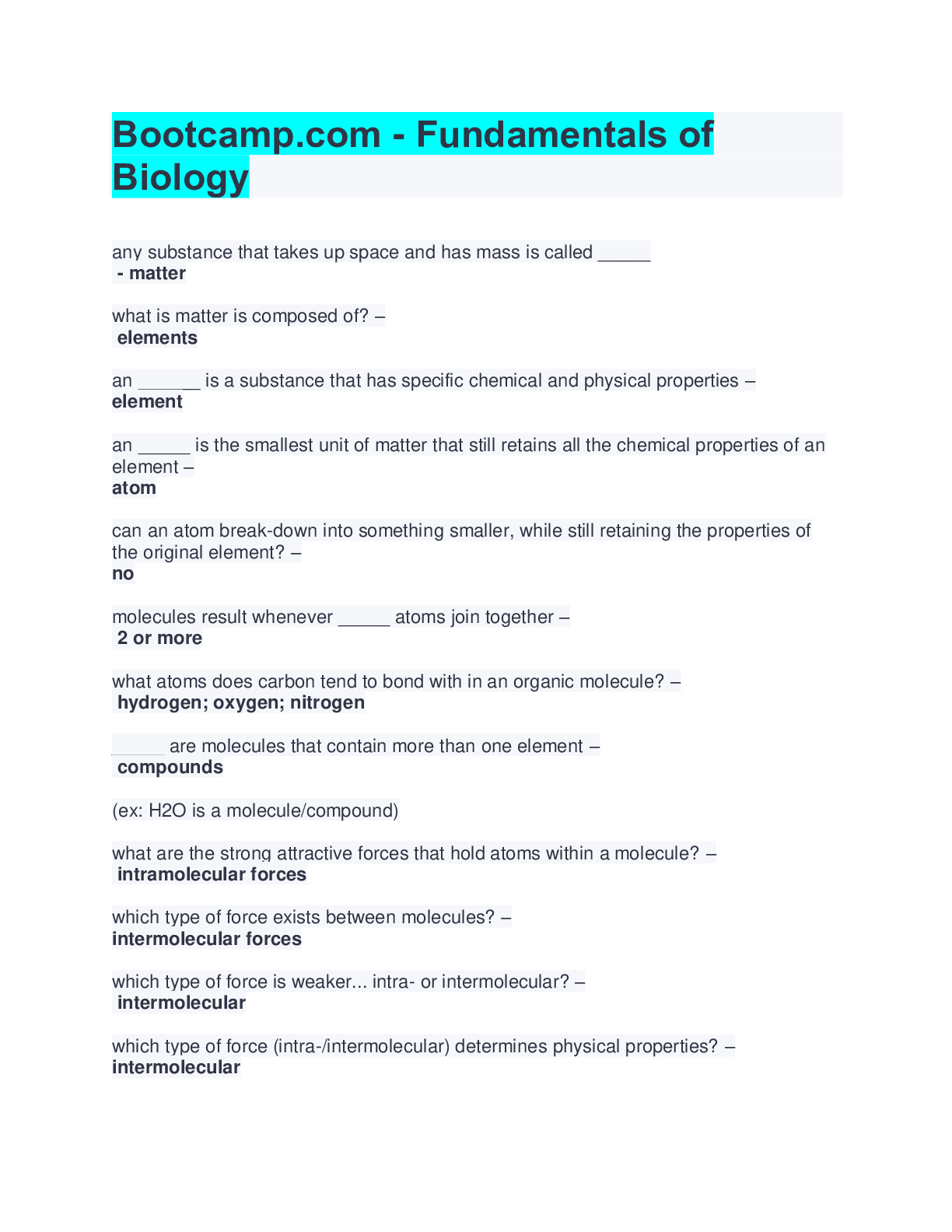
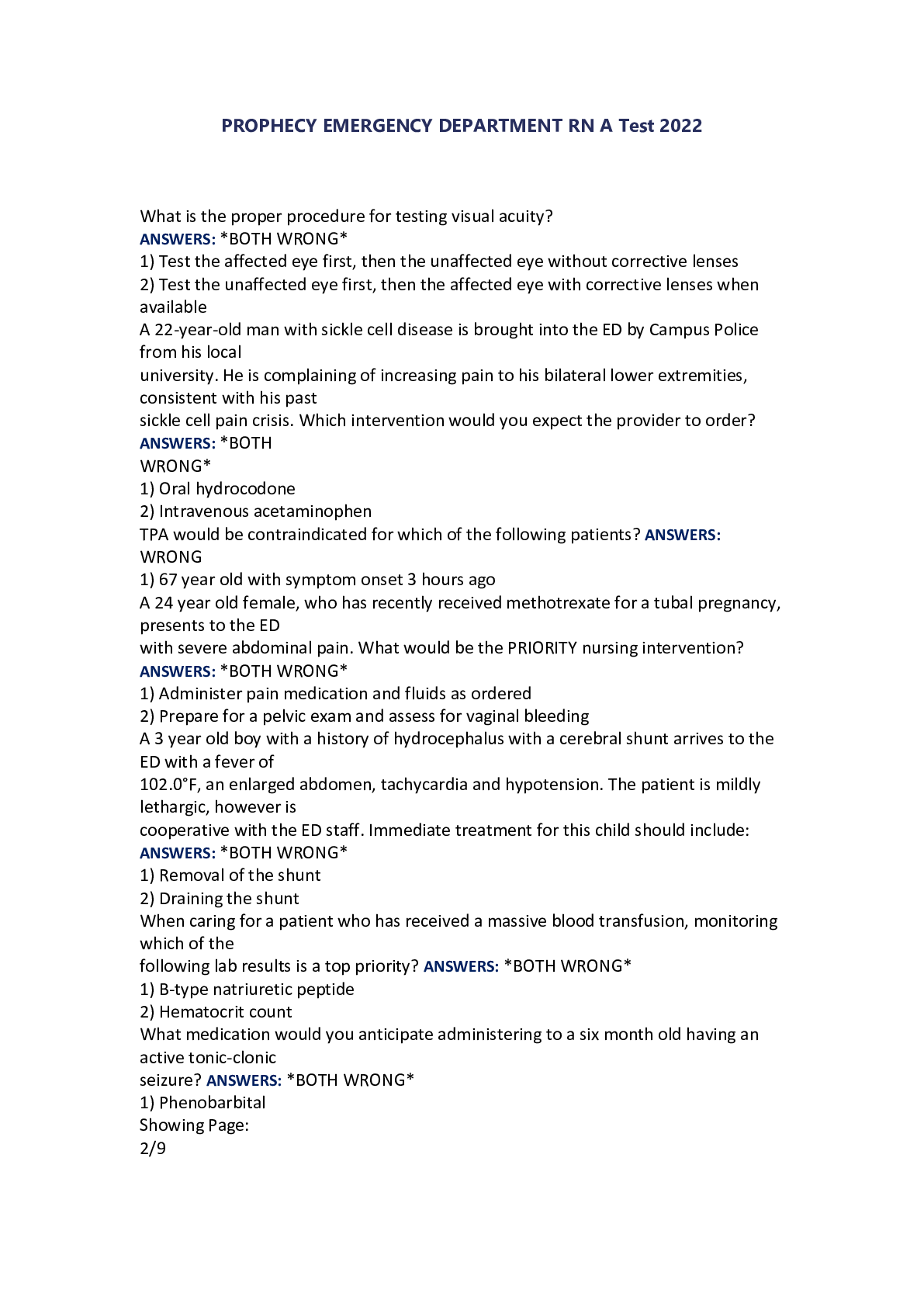
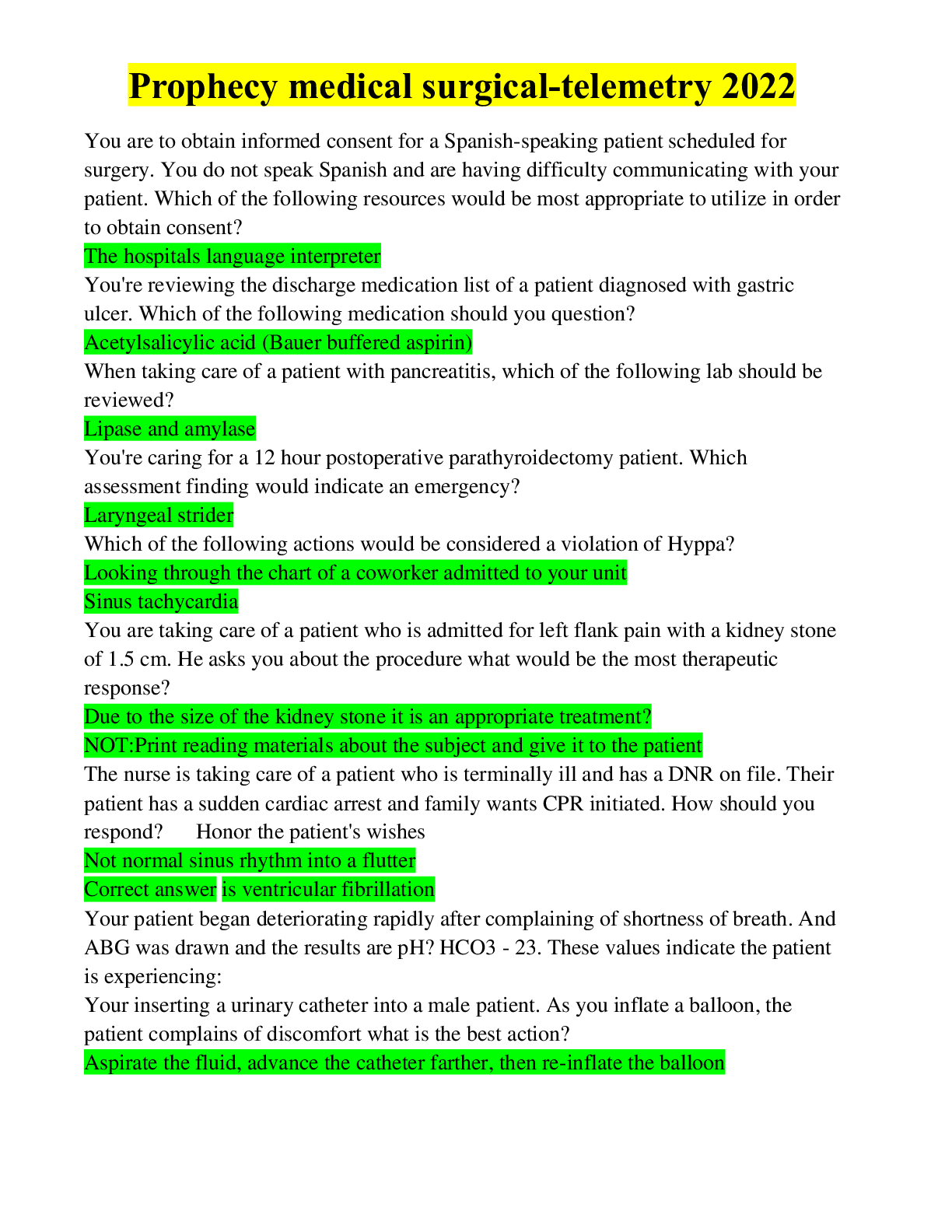
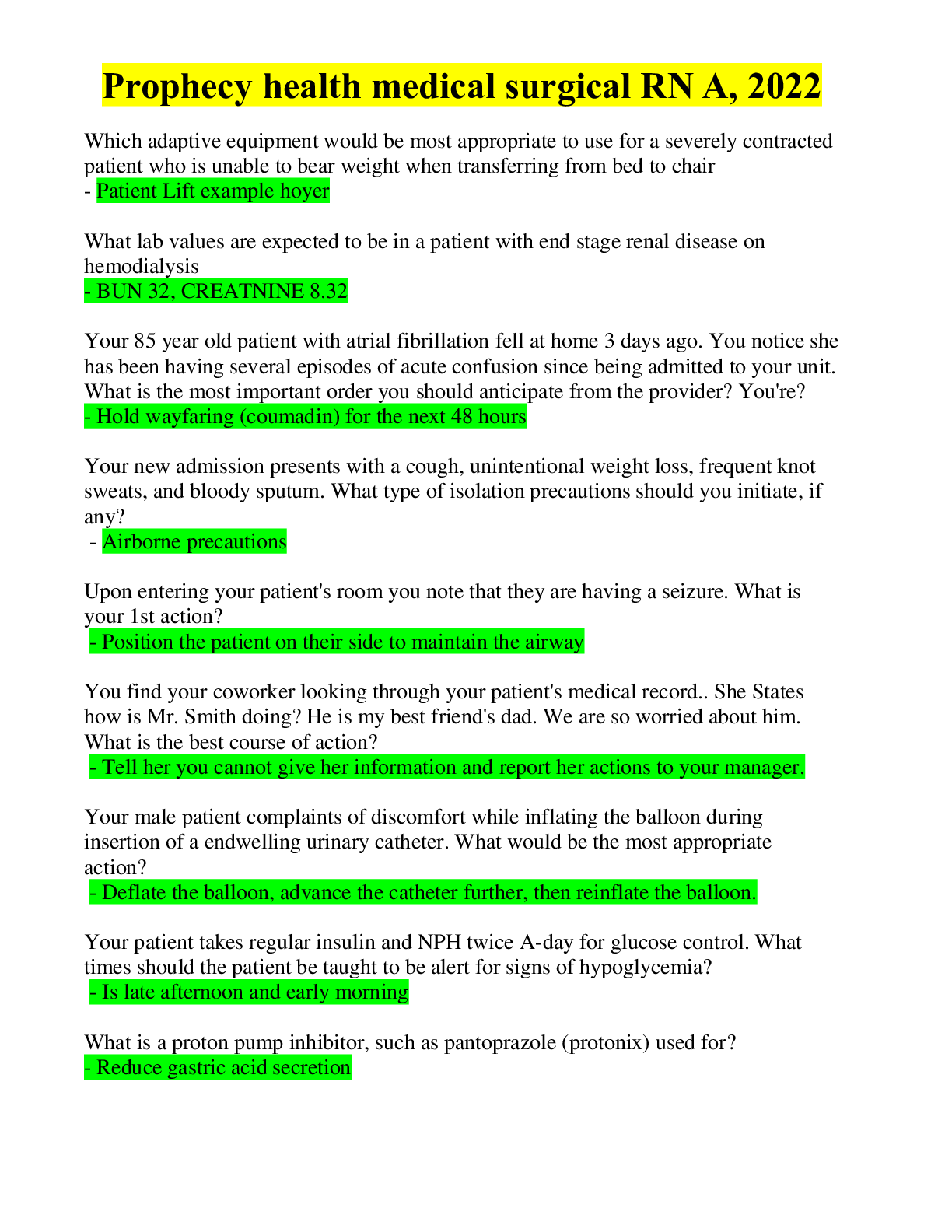
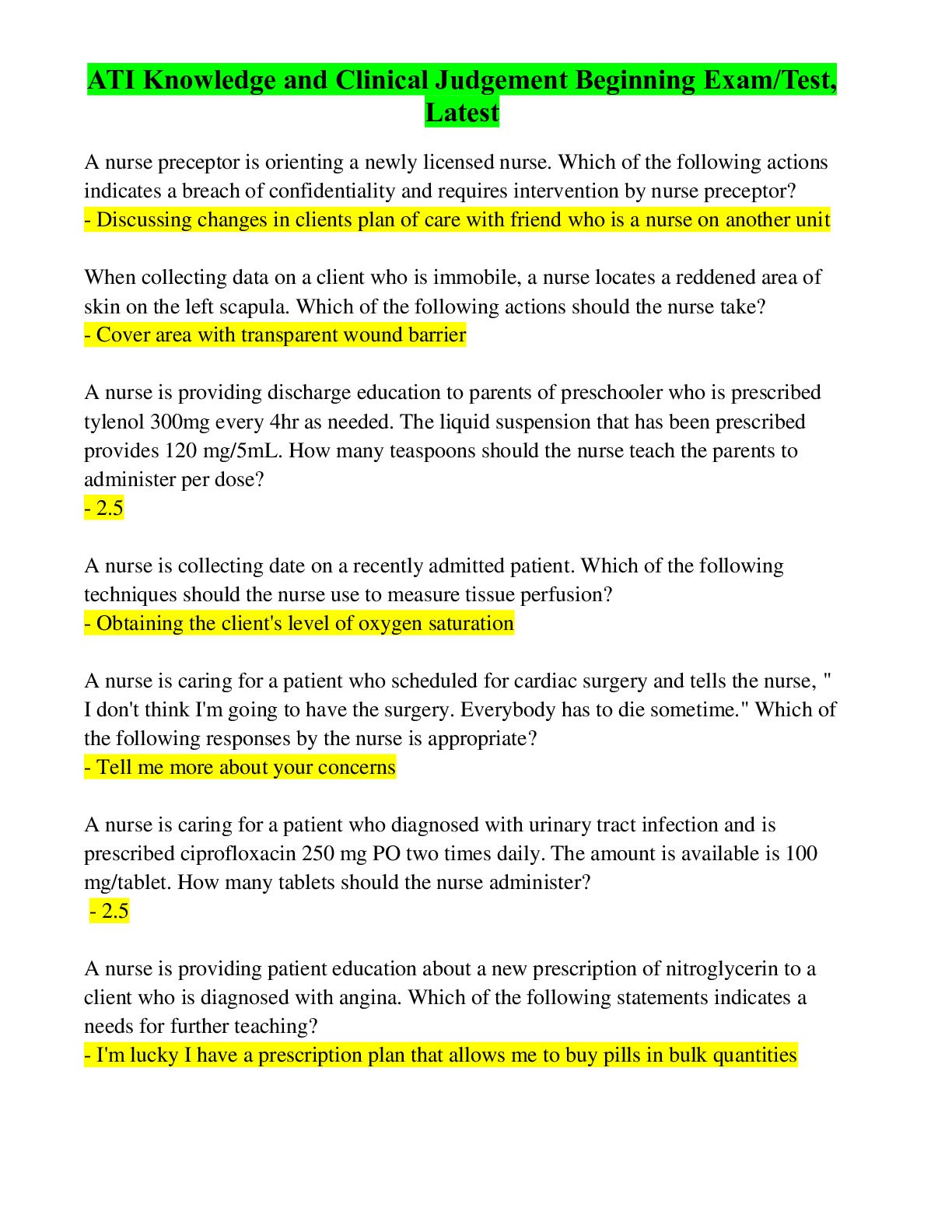
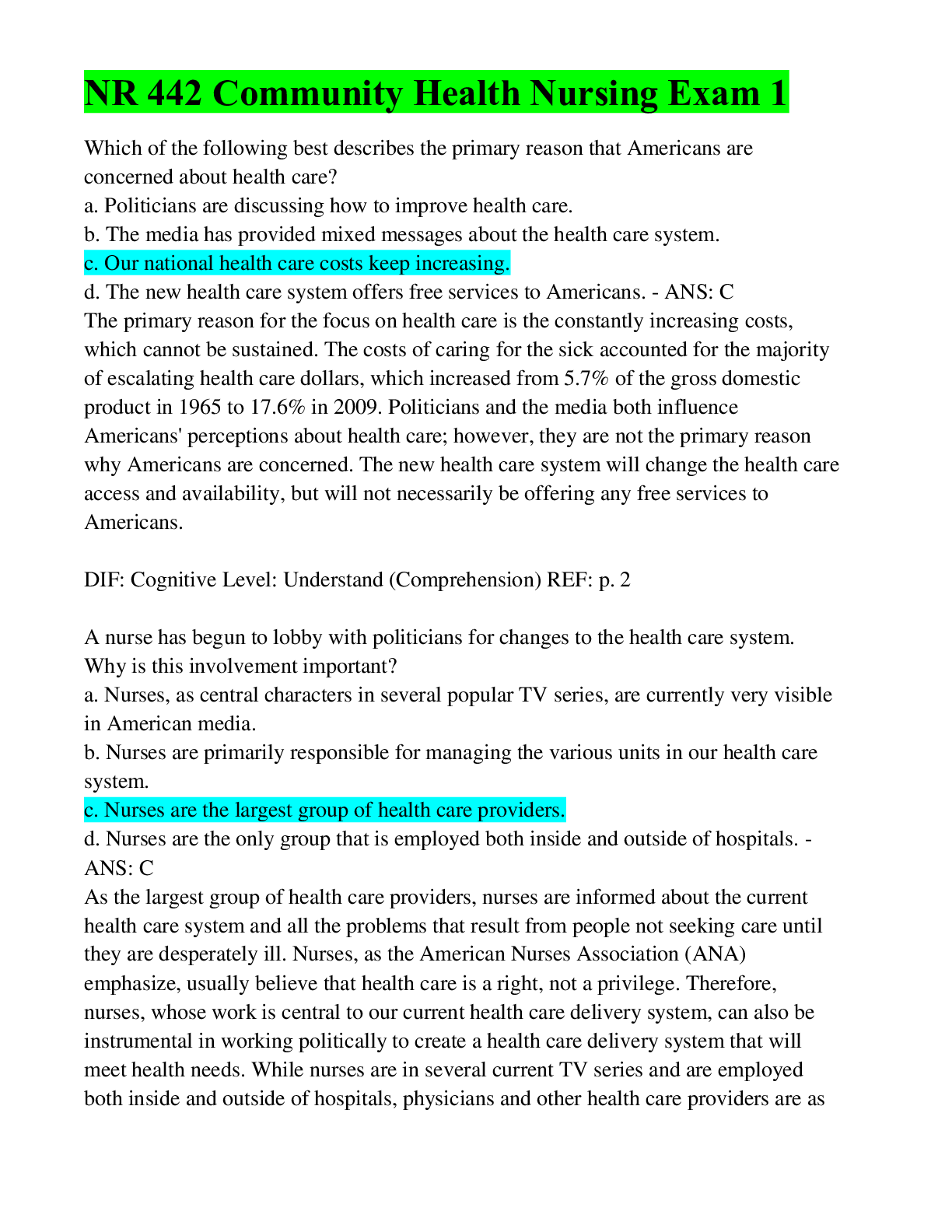
 Exam, Answered.png)
 Exam 1.png)

